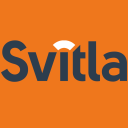Many companies have embarked on a digital transformation of their business in an effort to increase sales and support customers through online systems, apps and social media. IT organizations are encouraged to develop a “fast” or “second gear” mindset capable of operating at internet speed and being focused on a digital transformation. Carrying out this shift while simultaneously supporting legacy systems that cannot be changed as rapidly is a tall order for many IT organizations. In-house IT departments must either learn to reinvent themselves so they can adapt to the fast-paced evolution of technology or outsource these efforts to quickly gain the expertise needed. IT outsourcing, or more specifically, outsourcing the creation of innovative and dynamic software apps and systems, is a reliable way for companies to ramp up a development team for the required fast gear.
According to McKinsey & Company, a digital enterprise architecture needs to include several elements to facilitate digital transformation:
- Two-speed IT architecture – as described here.
- Instant cross-channel deployment of functionality - using micro services for small features or functionality that are deployed in minutes or hours.Zero downtime – using test-driven development (TDD), continuous integration and deployment (CI/CD) that enable the update of individual pieces of functionality without disrupting the entire system.
- Real-time data analytics - analytics that become an integral part of the app and not just a stand-alone process.
- Easy process configuration - business users are able to change features without custom coding.
- Automated scaling of IT platforms - scalability across redundant private and public-cloud environments to eliminate potential slowdowns and downtime.
- Secure architecture - cybersecurity as an integral part of the overall application.
Outsourcing provides these elements and accelerates the transition to a two-speed model. The agile culture required to think of software as a product, created in a factory-like manner with continuous improvement is achieved much more easily in an outsourced software development shop that is an expert at product development, rather than building a “fast” IT team and culture in a historically “slow” IT organization.




![[Blog cover] SEO optimization best practices](https://svitla.com/wp-content/uploads/2025/05/Blog-cover-SEO-optimization-best-practices-560x310.jpg)
